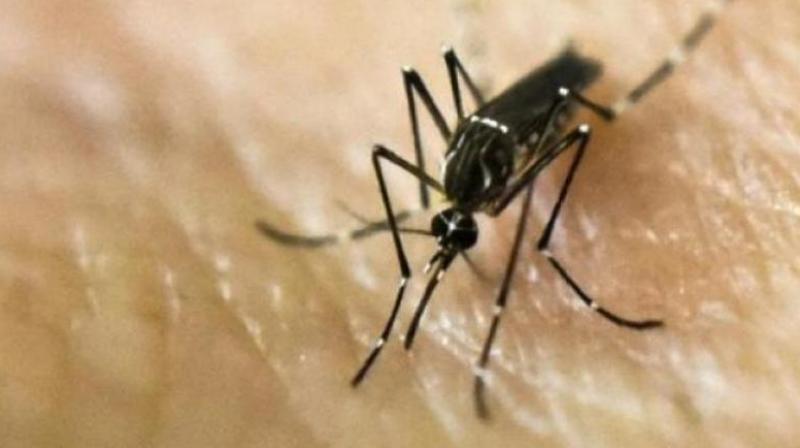Guard against mosquito bites to prevent brain fever
Japanese Encephalitis, which was the cause of death of 30 children in Gorakhpur, is a mosquito-borne viral disease.

HYDERABAD: Japanese Encephalitis, which was the cause of death of 30 children in Gorakhpur, is a mosquito-borne viral disease which manifests as a brain fever. Its occurrence is quite common in many parts of India. Dr Sudhir Kumar, a neurologist, said, “Encephalitis is a viral disease, and Japanese Encephalitis spreads through the bite of a mosquito. The disease has been rampant for nearly three decades. Its incidence is highest in coastal areas such as West Bengal, Odisha and Andhra Pradesh, because of the high number of breeding areas for mosquitoes.”
Most adults develop a natural immunity against the virus, however, mortality among children who contract the disease is very high. There is usually a spike in the number of cases that are reported during the monsoon season. Dr Sandeep Nayani, a neuro-physician, said, “The disease causes inflammation of the brain, which in turn causes the death of brain cells. Depending on which part of the brain is affected, internal organs begin to suffer.” There is no cure for the disease. Patients are only provided supportive treatment, and the supply of oxygen is critical. “We try to stop convulsions and provide oxygen to different centres of the brain to ensure that patients survive. However, most patients develop rigidity in their muscles, paralysis, and disabilities, or they go into a coma,” said Dr Sudhir Kumar.
Though there is a vaccine for Japanese Encephalitis, its administration is not as widespread as that of other vaccines. Doctors said that the vaccine, once administered, is effective for a period of one year with 90 per cent efficiency, but it is not very easily available. Dr Rajashekar Reddy, a senior neurologist, said, “To stop the spread of the disease, it is important to prevent mosquito bites. Mosquito nets should be used, especially during the rains, and children must be taken special care of. The disease starts off with minor symptoms such as neck pain or body ache. But it can cause the patient to go into a coma if it progresses into convulsions.” Doctors said that the occurrence of another Gorakhpur-like incident can only be prevented if all hospitals are equipped with adequate medical facilities.
Poor medical set-up at state hospitals:
Questions are being raised regarding medical facilities available at government hospitals. The two largest government hospitals in Telangana – Osmania Hospital and Gandhi Hospital—are constantly in the limelight for having inadequate medical supplies. An ICU unit equipped with 65 beds and the latest technology was inaugurated at Gandhi Hospital earlier this week. However, doctors said that it is not yet functional. Doctors from the surgical department of the hospital said that they are managing with limited facilities available and that they are in urgent need of new facilities.
Dr Sharath Kumar, the superintendent of Gandhi Hospital, said, “A lot of people entered the ward during the inauguration process. We cannot begin operation unless it is completely sterilised. I have been cautioned by the government to ensure that the ward is completely clean. I will have to send culture reports as well. Unless I get a positive response, the ward cannot open.”
Osmania General Hospital suffers from a lack of oxygen cylinders. Doctors talk about having witnessed incidents where oxygen supply has been cut off halfway through treatment, causing the patient’s condition to deteriorate. A doctor from the medical department said, “We have only four ventilators and at least 20 critical patients from our department alone, every day. All of these patients need oxygen, but we are unable to provide it to half of them. Often, we have to keep switching the oxygen supply. Many times the oxygen cylinder do not work, or the supply gets cut-off unexpectedly.”
The hospital authorities say that the government is trying to provide as many facilities as possible and that people cannot expect treatment at par with western standards. G.V.S Murthy, the superintendent of Osmania Hospital, said, “We get hundreds of critical patients every day. So many of them get cured, so it should be understood that we are doing the best with what we have. Some casualties cannot be avoided. We try to switch the ventilators between patients from different departments. The government authorities are trying to procure additional medical equipment for the hospital. We try to create an inter-departmental process for the borrowing of necessary items.”

